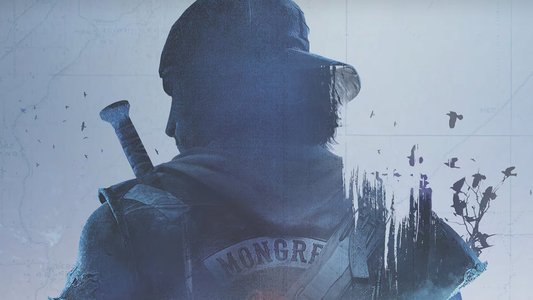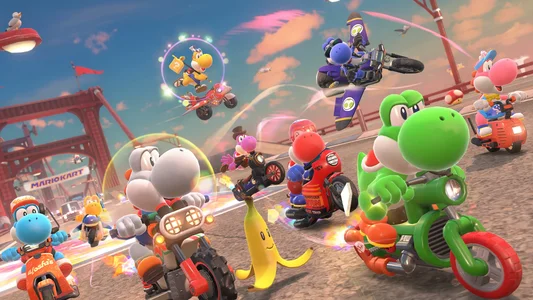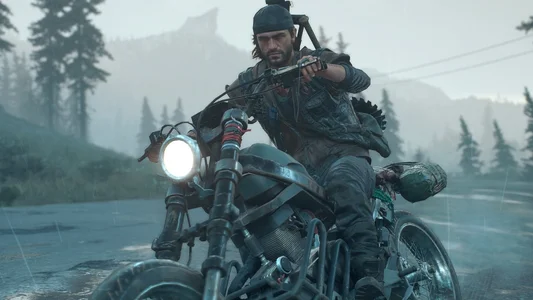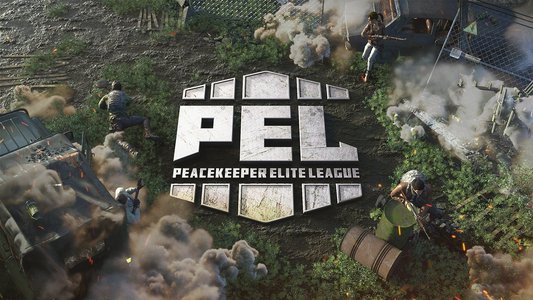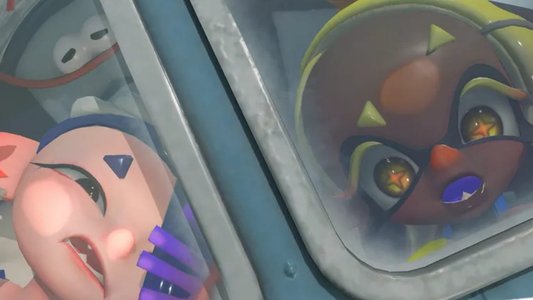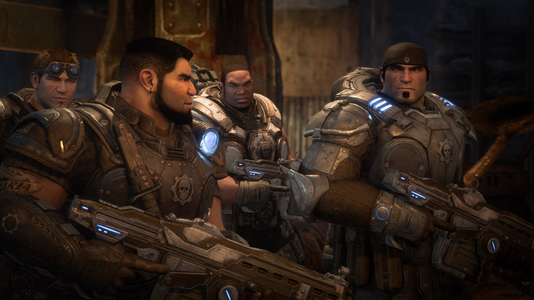Memory constraints are a thing of the past, right?
Turns out they’re not. Not only do many off-the-shelf engines manage memory poorly, many platforms still have some rather aggressive memory requirements. Then there are disc and cartridge-based size limitations on top of that.
Here we have a host of stories from across the industry (and across the years/platforms) about less-than-righteous methods used to fit levels, textures, and entire games into their required spaces. They may not be pretty, but they got games shipped, and nobody was the wiser… Until now.
And if you enjoy these stories, make time to check out our feature from last month in which a bunch of your fellow game developers shared the most memorable dirty coding tricks that helped them get games out the door.
About that loading screen
The game in question (a first person shooter) had issues unloading levels cleanly on Xbox; some memory could not be reclaimed, so after finishing a level and going into the next one, the game would always crash. The Xbox had very limited memory, and unlike PC, when a program runs out of memory, it does not have extra hidden slow storage to use as a backup. It's immediate death.
The team actually noticed this very late, because they had the ability to directly start the game into a level. This was a feature of the game editor which allowed the programmers and designers to jump directly into the level they were working on, bypassing the main menu and the previous missions. This is a vital feature of in-development games, one so common that I have never seen a game without it (although it is often stripped before shipping).
"When finishing a level, the game would reboot the console and restart itself with a command-line argument (the name of the level to start). Of course, a reboot means a black screen for a while, so a fading screen was implemented quickly to transition to black."
As a result, everybody started the game from the editor directly into a level out of convenience. Except of course the ones developing the menu, but they would only start the main menu and never enter a level. So most developers on the project were not immediately aware that levels could not be cleaned up quickly.
When QA discovered this, it became quite a challenge to clean up all the leaks that late in the project. The first leaks were easy to find, but it became increasingly challenging to hunt down and reclaim every little piece of memory before starting a new level. After some work, one could start 4-5 levels in a row, but eventually the console would just crash. It was not possible to play the campaign in one go.
The team did not manage to fix everything in time. Or maybe they gave up quite early, I am not sure... But they used their development feature, and a nice API that existed on the Xbox. It was possible then (and is still possible on the Xbox 360) to ask the console to reboot itself. And it is possible to tell the Xbox what to do when it is done rebooting.
So it was possible to ask the console to reboot and restart the same game, with a parameter. And so the quick-level-starting was moved from the editor to the game itself. When finishing a level, the game would reboot the console and restart itself with a command-line argument (the name of the level to start). Of course, a reboot means a black screen for a while, so a fading screen was implemented quickly to transition to black. The console would reboot and jump into the next level, just as the game editor could do, and then fade into the new level. Voila, the perfect(?) way to clear all memory between levels.
- Nicolas Mercier
RAM and Crash
I was one of the two programmers (along with Andy Gavin) who wrote Crash Bandicoot for the PlayStation 1.
RAM was still a major issue even then. The PS1 had 2MB of RAM, and we had to do crazy things to get the game to fit. We had levels with over 10MB of data in them, and this had to be paged in and out dynamically, without any "hitches"—loading lags where the frame rate would drop below 30 Hz.

It mainly worked because Andy wrote an incredible paging system that would swap in and out 64K data pages as Crash traversed the level. This was a "full stack" tour de force, in that it ran the gamut from high-level memory management to opcode-level DMA coding. Andy even controlled the physical layout of bytes on the CD-ROM disk so that—even at 300KB/sec—the PS1 could load the data for each piece of a given level by the time Crash ended up there.
I wrote the packer tool that took the resources—sounds, art, lisp control code for critters, etc.—and packed them into 64K pages for Andy's system. (Incidentally, this problem—producing the ideal packing into fixed-sized pages of a set of arbitrarily-sized objects—is NP-complete, and therefore likely impossible to solve optimally in polynomial—i.e., reasonable—time.)
Some levels barely fit, and my packer used a variety of algorithms (first-fit, best-fit, etc.) to try to find the best packing, including a stochastic search akin to the gradient descent process used in Simulated annealing. Basically, I had a whole bunch of different packing strategies, and would try them all and use the best result.
The problem with using a random guided search like that, though, is that you never know if you're going to get the same result again. Some Crash levels fit into the maximum allowed number of pages (I think it was 21) only by virtue of the stochastic packer "getting lucky." This meant that once you had the level packed, you might change the code for a turtle and never be able to find a 21-page packing again.
There were times when one of the artists would want to change something, and it would blow out the page count, and we'd have to change other stuff semi-randomly until the packer again found a packing that worked. Try explaining this to a crabby artist at 3 in the morning.
By far the best part in retrospect—and the worst part at the time—was getting the core C/assembly code to fit. We were literally days away from the drop-dead date for the "gold master"—our last chance to make the holiday season before we lost the entire year—and we were randomly permuting C code into semantically identical but syntactically different manifestations to get the compiler to produce code that was 200, 125, 50, then 8 bytes smaller. Permuting as in, "for (i=0; i < x; i++)"—what happens if we rewrite that as a while loop using a variable we already used above for something else? This was after we'd already exhausted the usual tricks, e.g., stuffing data into the lower two bits of pointers (which only works because all addresses on the R3000 were 4-byte aligned).
Ultimately Crash fit into the PS1's memory with 4 bytes to spare. Yes, 4 bytes out of 2097152. Good times.
- Dave Baggett
inky.com (and Naughty Dog employee #1)
[Originally posted here!]
An eye for detail
This happened like 10 years ago. At that time I was working in a small studio, on a RTS game shipping exclusively on PC. It was a mid-sized team, (about 35 people) for roughly a year and a half of production.
This RTS was level based: whenever you beat a level, it was unlocking the next one, and so on. As with any PC game, it was meant to run on several types of configuration, so we were shipping the game with 3 sets of textures of different resolutions: low, medium, and high.
So each level came with two additional packs of texture, one for the medium resolution textures, and another one for the high res ones (low ones were packaged directly in the main bigfile).
"Recorded voices in German last longer and take more disk space than other languages. All our budgets have been established with other languages in mind. We now have roughly 10 hours to fix the problem."
Production went pretty well, and the closing of the game was almost done. Performance was fine, stability was there, most bugs were fixed. Then comes the final day before the deadline. We have to burn our final gold master CDs for every SKU, in order to send them to the factory first thing in the next morning.
So we started by building ISO and burning English, French, and Spanish, and testing them. Everything was going smoothly. And then comes the German SKU! We started building the ISO, and "This image does not fit on the media" popped up on the screen.
What? How is this possible? We just burned 3 other SKUs, and it's now 8pm. The CDs need to be sent at 7am the next day. Looking closer to the problem, it happens that recorded voices in German last longer and take more disk space than other languages. All our budgets have been established with other languages in mind. We now have roughly 10 hours to fix the problem, burn that CD, and test it to make sure it actually works. There is no time to re-compress the audio or do any clever other changes to save some disk space.
Then we got a brilliant idea: choose one of our levels, remove the high resolution texture pack, and replace it with a copy of the medium texture pack. BAM, 50 MB saved: ISO fits on the CD. So our German friends with powerful PCs have played one of our levels with same details of texture as the one with a medium configuration! I can tell you, this was a very long and stressful night!
- Rémi Quenin
Engine architect,
No tags.














